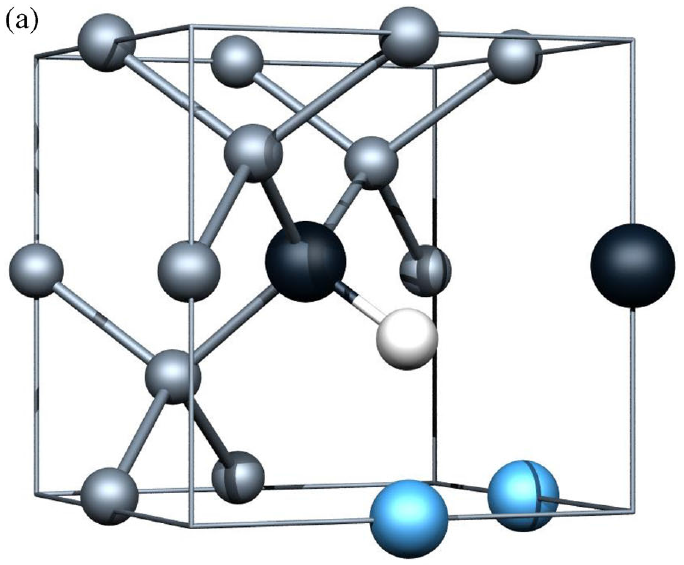 Di-nitrogen-vacancy-hydrogen defects in diamond: a computational study
Di-nitrogen-vacancy-hydrogen defects in diamond: a computational study
Density functional theory was used to determine selected experimentally observable properties of the N2VH and N2VH2 point defects in diamond. We report that the symmetry of the defects are C1h and C2v respectively with the hydrogen(s) saturating carbon radicals that are produced when the vacancy is formed. N2VH has an accessible negative charge state if the Fermi energy lies above around 2.4eV above the valence band top, as N2VH2 contains only species with their valence satisfied, only the neutral charge state of this species is thermodynamically stable. We predict that N2VH0 would be detectable in infrared, with a C-H stretch mode around 3050 cm−1 for the neutral species, shifting to 2700 cm−1 in the negative charge state. N2VH2 is also expected to be visible in infrared, with the presence of two, sterically interacting H atoms resulting in peaks with higher wave numbers, being around 3370 and 3540 cm−1 for the anti-symmetric and symmetric stretch modes, respectively. Similarities can be drawn between the bandstructures of N2VH and the isoelectronic N3V centre, from which we predict the likely electronic optical transition for this centre. N2VH2 is expected to not give rise to any sharp electronic transitions.
Go back